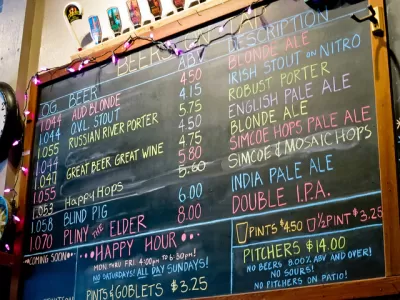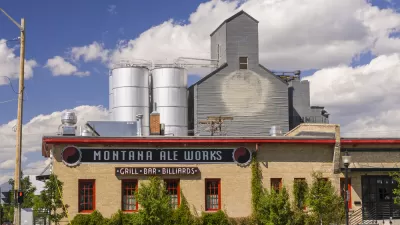The spread of craft beer manufacturing around the United States has followed demographic patterns, along with friendly regulations.

A newly released paper [pdf] in the Journal of Wine Economics documents the spread of craft beer production across the United States, reports Alison Griswold. The study sheds light on the other side of the equation in the booming popularity of craft beer—not which beers people are buying and where, but where the craft beers are crafted, as it were.
Griswold summarizes the narrative presented in the paper:
"Back in the 1980s, the vast majority of craft breweries were located in the Pacific Northwest—California, Washington, and Oregon. Over the next decade, production moved to the Northeast, and then slowly came back to fill out states in the Midwest. It took until 2001 for every state to be making craft beer, with southern states generally taking longest to enter the market."
The paper's researcher's boil down the causes for that geographic pattern to four main factors. According to Griswold, "[t]he first three are demographic: Craft breweries tend to set up in states with higher incomes, a denser population, and a greater number of young adults." The fourth factor is regulation, which varies widely between states and even cities.
FULL STORY: These maps show how craft beer production spread across the US

Planetizen Federal Action Tracker
A weekly monitor of how Trump’s orders and actions are impacting planners and planning in America.

Maui's Vacation Rental Debate Turns Ugly
Verbal attacks, misinformation campaigns and fistfights plague a high-stakes debate to convert thousands of vacation rentals into long-term housing.

San Francisco Suspends Traffic Calming Amidst Record Deaths
Citing “a challenging fiscal landscape,” the city will cease the program on the heels of 42 traffic deaths, including 24 pedestrians.

Amtrak Rolls Out New Orleans to Alabama “Mardi Gras” Train
The new service will operate morning and evening departures between Mobile and New Orleans.

The Subversive Car-Free Guide to Trump's Great American Road Trip
Car-free ways to access Chicagoland’s best tourist attractions.

San Antonio and Austin are Fusing Into one Massive Megaregion
The region spanning the two central Texas cities is growing fast, posing challenges for local infrastructure and water supplies.
Urban Design for Planners 1: Software Tools
This six-course series explores essential urban design concepts using open source software and equips planners with the tools they need to participate fully in the urban design process.
Planning for Universal Design
Learn the tools for implementing Universal Design in planning regulations.
Heyer Gruel & Associates PA
JM Goldson LLC
Custer County Colorado
City of Camden Redevelopment Agency
City of Astoria
Transportation Research & Education Center (TREC) at Portland State University
Jefferson Parish Government
Camden Redevelopment Agency
City of Claremont





























